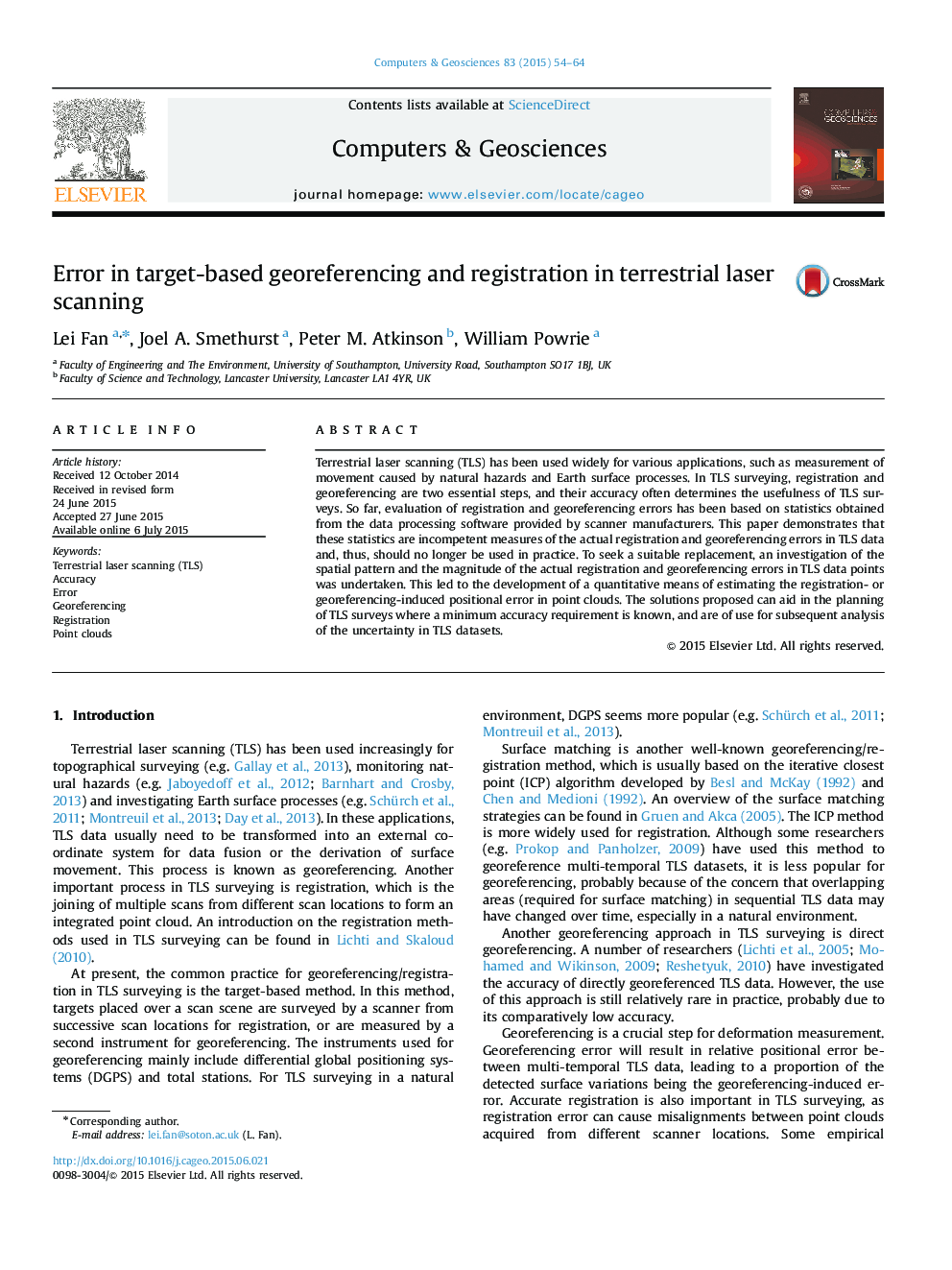| Article ID | Journal | Published Year | Pages | File Type |
|---|---|---|---|---|
| 6922490 | Computers & Geosciences | 2015 | 11 Pages |
Abstract
Terrestrial laser scanning (TLS) has been used widely for various applications, such as measurement of movement caused by natural hazards and Earth surface processes. In TLS surveying, registration and georeferencing are two essential steps, and their accuracy often determines the usefulness of TLS surveys. So far, evaluation of registration and georeferencing errors has been based on statistics obtained from the data processing software provided by scanner manufacturers. This paper demonstrates that these statistics are incompetent measures of the actual registration and georeferencing errors in TLS data and, thus, should no longer be used in practice. To seek a suitable replacement, an investigation of the spatial pattern and the magnitude of the actual registration and georeferencing errors in TLS data points was undertaken. This led to the development of a quantitative means of estimating the registration- or georeferencing-induced positional error in point clouds. The solutions proposed can aid in the planning of TLS surveys where a minimum accuracy requirement is known, and are of use for subsequent analysis of the uncertainty in TLS datasets.
Related Topics
Physical Sciences and Engineering
Computer Science
Computer Science Applications
Authors
Lei Fan, Joel A. Smethurst, Peter M. Atkinson, William Powrie,
